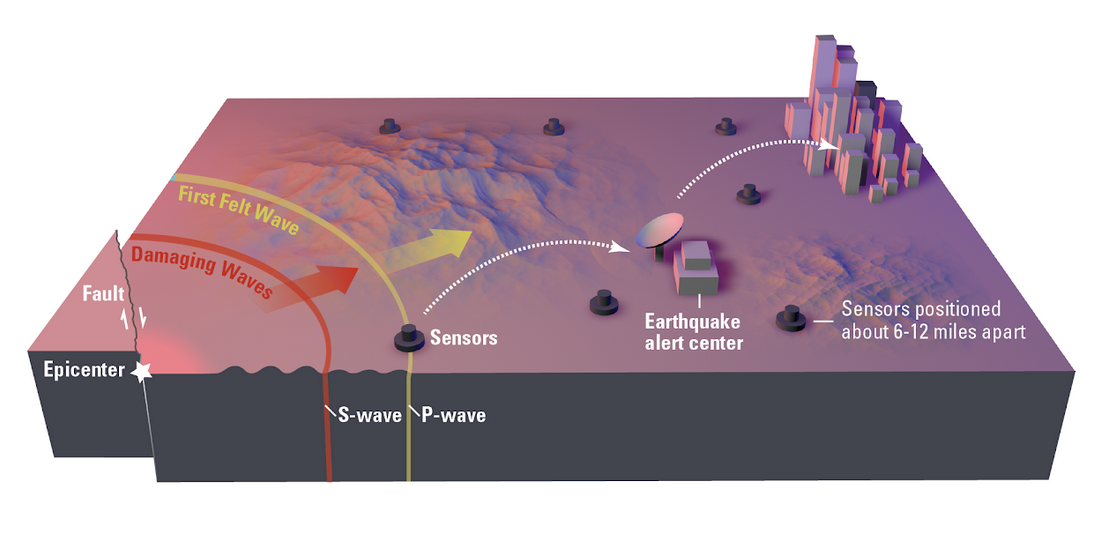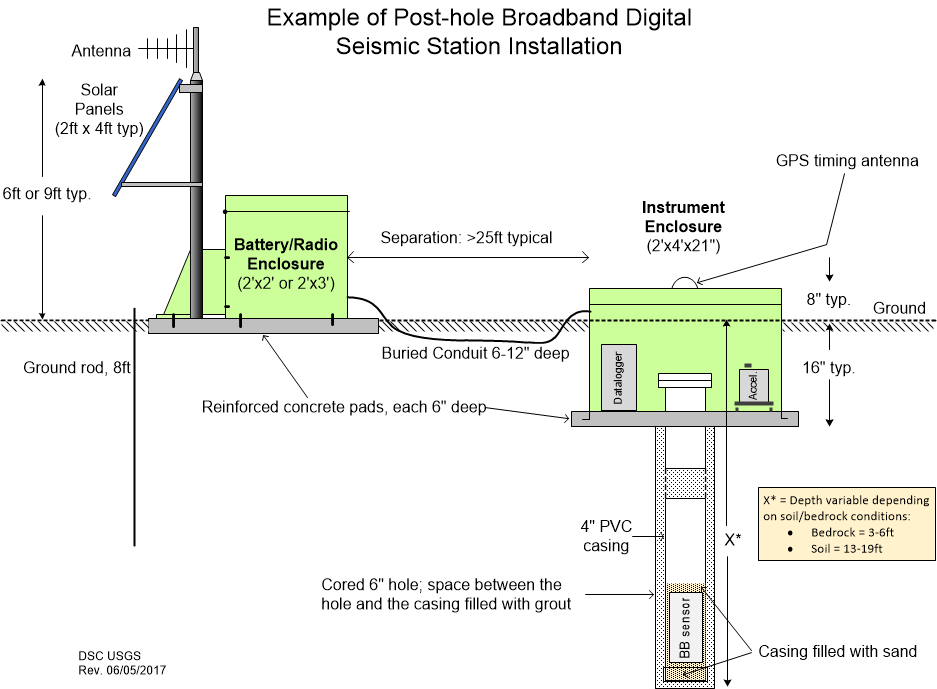How it Works
DETAILS ON THE SCIENCE, TECHNOLOGY, AND SYSTEMS USED
The Science
- In an earthquake, a rupturing fault sends out two different types of waves. The fast-moving P-wave is first to arrive, but the damage is caused by the slower S-waves and surface waves.
- Sensors detect the P-wave and immediately transmit data to an earthquake alert center where the location and size of the quake are determined and updated as more data becomes available.
- A message from the alert center is immediately transmitted to users.
Limitations
- Earthquake early warning is not earthquake prediction.
- The alert cannot come before the earthquake starts.
- The goal is for people to receive the alert before they feel shaking.
- People may receive an alert before, during, or after shaking arrives at their locations.
- The length of the warning depends on a number of factors. The factors include how close the seismic sensors are to each other, how quickly the data moves through the system (we are working to speed it up every day), how big the earthquake is, how deep it started in the earth and whether it moved through sand, solid ground or bed rock.
- The California Earthquake Early Warning System is based on innovative technology that will improve over time.
- In rare circumstances, you may receive a ShakeAlert® when there was no earthquake.
California Sensor Network
Cal OES works collaboratively with all system partners and uses the workgroup as a forum to exchange ideas, coordinate resources, set system priorities, inform decision-making, integrate new innovations, and expand and strengthen California Integrated Seismic Network (CISN) capabilities to support a full public alert and warning system rollout. The CISN collects ground motion data from seismic stations throughout California to rapidly and automatically process this data and produce information about earthquakes occurring. The data is processed and the ShakeAlert® Message estimating magnitude and location is produced indicating that an earthquake has begun and shaking is imminent. This information can be used for people to protect themselves and for industries to be able to take actions to protect workers and equipment.
Seismic Station Basics
Seismic sensor set-ups may vary based on the landscape, geological features, telemetry capabilities, and contracted partners’ equipment experience.
Telemetry
One of the key components of the system is to transfer data quickly from the seismic sensors to the central processing device and finally to the end user. The speed of the transmission is the key to provide as much time as possible for the end user.
The data is transferred using cell phone towers and the statewide microwave network, managed by the Public Safety Communications Division of Cal OES. The state microwave serves as the backbone of the State’s 911 system as well as supporting radio communications for many state and local agencies.
Seismic stations include 4 major elements:
Seismic Sensor – all cases in accelerometers (that measure larger ground motion) and some cases include a seismometer (that are more sensitive but cut off larger ground motion).
Data logging collector and storage unit.
Power system (which may include solar panels).
Telemetry equipment to transmit data to the CISN processing centers.







